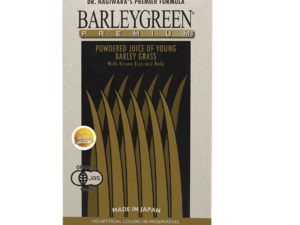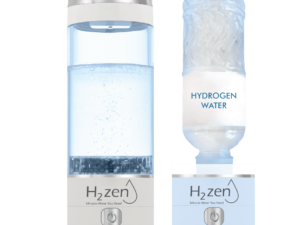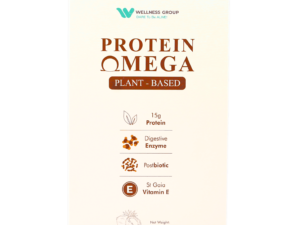One meta-analysis found small but measurable shifts in blood markers after weeks of daily intake. This hook frames a practical discussion for Malaysians curious about supportive care.
The article summarizes a 2024 systematic review of eight randomized trials that examined molecular hydrogen intake and common liver markers such as ALT, AST, and ALP. The trials covered diverse groups — from metabolic conditions like NAFLD and T2DM to viral and oncology settings — and used 500–2000 mL per day for 4 days to 3 months.
Results were modest and inconsistent across studies, so the piece stresses context rather than claims of cure. It outlines who might see benefit, typical doses, safety notes, and why biology suggests antioxidant and anti-inflammatory pathways could matter.
Wellness Group offers guidance for Malaysians seeking supportive strategies. Contact: WhatsApp +60123822655. Business hours: Mon–Fri 9:30 am–6:30 pm; Sat–Sun 10 am–5 pm.
Key Takeaways
- The meta-analysis pooled eight randomized trials with 433 participants and found modest marker changes.
- Study populations ranged from NAFLD and metabolic disorders to chronic viral and cancer-related cases.
- Typical intake in trials varied from 500–2000 mL daily over days to months.
- Evidence hints at antioxidant and anti-inflammatory mechanisms, but heterogeneity was high.
- Wellness Group can help Malaysians explore supportive options; this is informational, not a treatment plan.
Case Study Overview: Wellness Group’s look at hydrogen-rich water and liver health in Malaysia
Wellness Group reviewed randomized clinical trials to summarize controlled data on hydrogen and routine liver markers for a Malaysian audience. The goal was to turn trial results into clear guidance for clinicians and those exploring supportive care.
Objective and scope of the case study
The objective was to offer an evidence-based summary showing how hydrogen intake related to ALT, AST, ALP, and GGT across real clinical settings.
- The review included eight RCTs up to January 2024 covering NAFLD, T2DM/IFG, chronic hepatitis B, liver tumors, and CRC with liver metastases.
- Most trials compared hydrogen-rich water to placebo or pure water, with doses from 500–2000 mL daily and durations from days to months.
- Wellness Group frames this as supportive education, not a replacement for medical care.
Why this matters for patients with elevated ALT, AST, ALP, and GGT
Small shifts in these markers can signal early changes in organ function. The case study clarifies where modest changes were seen and where evidence stayed inconsistent.
| Patient group | Trials included | Typical dose | Duration | Primary outcomes |
|---|---|---|---|---|
| NAFLD | 3 RCTs | 500–1000 mL/day | 4–12 weeks | Small ALT/AST changes |
| Metabolic (T2DM/IFG) | 2 RCTs | 500–1500 mL/day | 2–12 weeks | Modest enzyme shifts, metabolic signals |
| Hepatitis & oncology | 3 RCTs | 1000–2000 mL/day | Days to 3 months | Variable results; safety OK |
Contact Wellness Group on WhatsApp +60123822655 for local guidance. Hours: Mon–Fri 9:30 am–6:30 pm; Sat–Sun 10 am–5 pm.
Background: Liver enzymes as early markers of dysfunction
Simple serum measures act as sentinels, alerting clinicians to hepatocellular or biliary problems at an early stage.
ALT and AST mainly reflect hepatocellular injury. When these levels rise, it usually means liver cells are stressed or damaged.
ALP and GGT more often point toward cholestasis or biliary tract involvement. Mixed patterns can occur when both cell injury and bile flow problems exist.
What abnormal tests typically indicate
- Hepatocellular signals: Elevated ALT/AST suggest direct cell injury from fatty change, viral hepatitis (HBV/HCV), alcohol, drugs, or toxins.
- Cholestatic signals: High ALP/GGT imply bile duct stress or obstruction and may arise with some medications or biliary disease.
- Metabolic links: Obesity, diabetes, and insulin resistance often accompany chronic disease and persistent enzyme elevations.
- Clinical approach: Serial blood testing matters more than a single result; trends guide lifestyle or medical steps.
Key point: A return toward normal levels usually signals improved function, but normalization does not always equal cure.
This article will next connect these clinical patterns to controlled human trials and to how hydrogen-focused strategies may target oxidative stress and inflammation that drive harmful changes.
Evidence base used in this case study
Here the authors collated randomized trials, preclinical work, and targeted clinical reports to form an integrated evidence map.
Systematic review and meta-analysis. A pooled analysis combined eight randomized controlled trials with 433 participants. The comparator was pure or placebo water. Small decreases were seen for ALT, AST, and ALP, but heterogeneity was high (ALT I2 ~99.7%; AST I2 ~98%; ALP I2 ~84.3%). Most trials had strong Jadad scores (4–8), supporting trial quality.
Long-term mechanistic findings from animal models. Six‑month exposure to hydrogen-rich regimes or 4% hydrogen gas reduced ALT and AST and shifted lipid metabolism. Researchers noted less lipogenesis, more lipolysis, altered amino acid and purine pathways, and NADP/NADPH as a central node.
Human clinical data on metabolic syndrome and glucose intolerance. A 24‑week clinical trial with >5.5 mmol H2 daily cut BMI, waist ratio, total cholesterol (~18.5 mg/dL), triglycerides (~47 mg/dL), fasting glucose and HbA1c (~12%), plus lower TNF-α, IL-6, and CRP. Tolerability was good.
What this means. The article synthesized diverse studies and methods, noted strengths of controlled trial designs, and set the stage for dosing and mechanism discussion later.
Hydrogen-rich water as a therapeutic antioxidant
Research since Ohsawa (2007) framed hydrogen as a selective antioxidant that targets the most toxic oxygen species. This selective action helps explain why some trials saw small changes in routine liver markers.
Targeting oxidative stress and cytotoxic oxygen radicals
How it works: Hydrogen selectively reacts with hydroxyl radicals (·OH) and peroxynitrite (ONOO-), the oxygen radicals most damaging to cells.
“Hydrogen acts as a therapeutic antioxidant by selectively reducing the hydroxyl radical and peroxynitrite.”
Because hydrogen diffuses into membranes and mitochondria, it may lower oxidative stress where injury starts. Preclinical and clinical reports show reduced oxidative markers and less inflammation after exposure.
| Mechanism | Target | Expected effect |
|---|---|---|
| Selective radical scavenging | Hydroxyl radical, peroxynitrite | Lower oxidative load on hepatocytes |
| Mitochondrial diffusion | Inner mitochondrial space | Preserve cell energy and reduce stress |
| Anti-inflammatory signaling | Cytokines (TNF-α, IL-6) | Reduced inflammation; better biochemical trends |
Practical note: Antioxidant support can complement standard care, but outcomes vary by dose, duration, and disease context. The next sections explore those differences in detail.
Main finding: hydrogen-rich water improves liver enzyme profiles in patients
Meta-analysis results pointed to slight declines in common serum markers after regular hydrogen consumption in diverse clinical groups.
What the pooled data showed:
- Across randomized trials, those who drank hydrogen-rich water saw modest reductions in ALT, AST, and ALP versus placebo or pure water.
- Absolute changes varied by study and condition, reflecting heterogeneity across NAFLD, T2DM/IFG, hepatitis B, and oncology settings.
- Durations ranged from 4 days to 3 months and doses from 500–2000 mL/day, so length and amount likely affected effect size.
Statistical heterogeneity was high, so effect sizes require cautious reading. The direction of change was consistent, but magnitude differed by population and trial design.
Lower oxidative stress and reduced inflammatory signaling may explain favorable serum trends. These biochemical shifts align with related metabolic findings from longer trials.
Bottom line: The signal favors adjunctive use within comprehensive care, not as a standalone cure. Longer, targeted trials are needed to confirm clinical relevance and durability of these changes.
Study designs referenced: clinical trial, controlled trial, and placebo-controlled trial
Design clarity helps readers judge how reliable the reported changes were. Trials included clinical trial, controlled trial, and placebo-controlled trial formats. Each used random allocation and standard blood testing to compare two groups.
Group comparison and dosing
- Most trials split participants into an intervention group versus pure or placebo comparator.
- Doses ranged from 500–2000 mL per day depending on disease context and study goals.
- Durations varied: short oncology protocols lasted about 4–7 days, while metabolic trials often ran 8–12 weeks or longer.
Delivery, adherence, and reporting
Delivery methods included direct consumption and tablets that release measured milligrams or millimoles per dose. Authors such as Korovljeva, Ogawa, and Liang reported clear concentrations; others gave volumes without exact molarity.
“Clear dosing and placebo control strengthen causal inference in small trials.”
| Design | Typical dose per day | Duration |
|---|---|---|
| NAFLD RCTs | 500–1000 mL/day | 4–12 weeks |
| Metabolic trials | 1000–2000 mL/day | 8–12 weeks |
| Oncology/hepatitis | 500–1800 mL/day | 4 days–6 weeks |
What changed in liver enzymes: ALT, AST, and ALP levels at a glance
Combined analyses reported small but consistent trends toward lower ALT and AST across several trial populations. The pooled effect favored modest declines versus controls, yet statistical heterogeneity was high for ALT and AST.
ALP changes were smaller and less consistent. Across studies, ALP often shifted less than transaminases and showed more variable results between trial groups.
Short oncology protocols (days) did not yield meaningful serum shifts. The CRC metastases trial showed no change over four days, which contrasts with longer metabolic trials.
In a three‑month metabolic study, the active group had lower ALT versus filtered water. NAFLD trials were mixed: some authors reported AST reductions, while others found no significant differences.
One chronic hepatitis B trial reported better oxidative stress markers and parallel improvements in routine blood measures after six weeks.
“Serum changes reflect trends, not cures; clinical significance depends on magnitude, durability, and individual context.”
- Baseline levels and comorbid disease strongly influence group differences.
- Routine blood monitoring is recommended if this approach is used adjunctively.
- Broader metabolic and inflammatory outcomes may precede or accompany enzyme changes.
| Marker | Typical pooled change | Notes |
|---|---|---|
| ALT | Small decrease | High heterogeneity; better in some metabolic trials |
| AST | Small decrease | Mixed in NAFLD; clearer in some cohorts |
| ALP | Minimal change | Less consistent across studies |
Beyond enzymes: metabolic and inflammatory outcomes that support liver function
Biochemical trends are only part of the story. Trials with longer follow-up show broader shifts in metabolism and inflammation that help explain why modest serum changes matter.
Glucose and lipid benefits: A 24‑week high‑concentration trial reported lower BMI, waist‑to‑hip ratio, and resting heart rate. Fasting blood glucose and HbA1c fell by about 12%, while total cholesterol dropped ~18.5 mg/dL and triglycerides by ~47 mg/dL.
These changes reduce fat accumulation in hepatocytes and support better serum results over time. Better glycemic control can lessen insulin resistance, a key driver of fatty liver and related marker shifts.
Inflammation and redox balance: The trial showed declines in TNF-α, IL-6, and CRP, plus lower MDA and higher vitamins C and E. That pattern signals less oxidative stress and reduced inflammatory pressure on hepatic cells.
All participants completed the study with no adverse events, supporting tolerability of higher dosing and longer duration. Personal results vary, so regular serum checks and clinician review remain important.
“Systemic metabolic and anti-inflammatory benefits often accompany small serum shifts and may drive lasting liver health gains.”
| Outcome | Typical change | Relevance to liver |
|---|---|---|
| Fasting glucose / HbA1c | ↓ ~12% | Reduces hepatic fat deposition |
| Total cholesterol / TG | ↓ ~18.5 mg/dL / ↓ ~47 mg/dL | Lowers lipid burden on hepatocytes |
| Inflammatory markers | TNF-α, IL-6, CRP ↓ | Less hepatic inflammation and stress |
Mechanisms: how molecular hydrogen may modulate oxidative stress and inflammation
Animal and biochemical research now maps how small gaseous molecules alter hepatic energy pathways.
NADP/NADPH-linked metabolic pathways and mitochondrial effects
Long-term rodent models showed that low-concentration hydrogen exposure shifted the liver toward lipolysis and higher fatty‑acid oxidation. Increased acylcarnitines and acetoacetate suggested stronger mitochondrial fuel use. NADP emerged as a central regulator linking redox balance to lipid and amino acid enzymes.
From oxygen radicals to cell-level resilience
Molecular hydrogen acts as a selective therapeutic antioxidant that neutralizes the most damaging oxygen radicals without blocking normal signaling. Ohsawa et al. described targeted removal of hydroxyl radicals and peroxynitrite, which helps protect mitochondria and cellular membranes.
These mechanistic shifts correlated with lower serum ALT/AST in long-term models and with immune modulation signals consistent with reduced inflammation and better hepatic function.
“Selective antioxidant action at the mitochondrial level can curb cumulative oxidative damage.”
Next steps: further studies should map dose-response, tissue pharmacokinetics, and clinical translation. For practical context on use during pregnancy and safety, see hydrogen during pregnancy.
Dose, duration, and delivery: practical considerations for HRW
Practical dosing plans used across trials ranged from modest daily volumes to tablet regimens that deliver measured millimoles per day.
Typical clinical ranges were 500–2000 mL per day over 4 days to 3 months. One longer metabolic trial used tablets that provided >5.5 mmol molecular hydrogen per day for 24 weeks. NAFLD tablet protocols gave >4 mg per day for 8 weeks.
Tablet delivery standardizes dose by reporting milligrams or millimoles. That helps adherence and makes results easier to compare across studies and groups.
Longer durations — 12 to 24 weeks — were linked to clearer metabolic and anti-inflammatory changes. Short oncology protocols (days) rarely showed meaningful serum shifts.
Practical tips for Malaysians: take HRW on an empty stomach when protocols note it, tailor fluid intake for those with restrictions, and document timing to match outcomes. Monitor enzyme and metabolic levels to track effect over time.

| Delivery | Typical dose | Duration | Key advantage |
|---|---|---|---|
| Bottled intake | 500–2000 mL/day | 4 days–12 weeks | Easy daily use; variable concentration |
| Tablet-based | >4 mg/day to >5.5 mmol/day | 8–24 weeks | Standardised dose; better study comparability |
| High-concentration protocols | e.g., 3 mM or 1.4 mg/mL | Weeks–months | Stronger antioxidant signal; needs monitoring |
“Choose clinical-grade products with verified concentration and view dosing as adjunctive. Monitor and individualise care.”
Patient populations studied: NAFLD, T2DM/IFG, hepatitis, and oncology contexts
Trial data spanned NAFLD, glucose disorders, chronic hepatitis, and oncology, revealing mixed biochemical signals.
Where studies showed significant differences
NAFLD: Korovljeva reported lower AST and reduced hepatic fat, while other authors found no clear enzyme shifts but saw BMI or metabolic gains.
T2DM/IFG: Ogawa observed lower ALT and Liang noted better fasting glucose, total cholesterol, and gut microbiota — outcomes tied to broader metabolic syndrome management.
Hepatitis B: Xia’s six‑week trial documented improved oxidative stress markers and better liver function measures.
Where results were neutral
Oncology: Short protocols or concurrent radiotherapy (Kang, Yang) rarely changed AST/GGT over days, though oxidative markers fell.
Two groups designs with placebo or pure water controls helped isolate effect size across diseases. Clinicians should match expectations to disease stage, therapy, and duration, and favour longer protocols for metabolic conditions. For related metabolic outcomes and cholesterol context see this guide.
Data quality and analysis notes
Rigorous trial appraisal reveals strengths and limits that shape how the results should be read. The case study team examined scoring, consistency, and reporting across trials to judge certainty.
Jadad scoring, heterogeneity, and interpretation
Seven of eight trials scored between 4 and 8 on the Jadad scale, indicating good to excellent methods for randomization and blinding.
However, heterogeneity was very high for key outcomes (ALT I2 ≈ 99.7%; AST I2 ≈ 98%; ALP I2 ≈ 84.3%). That level of variation lowers confidence in pooled effect sizes.
- Internal validity: Most RCTs had robust design features that support causal inference.
- Consistency: Directional trends persisted across studies despite variable doses and durations.
- Bias checks: Funnel plot assessment (Hedges’s method) did not suggest major publication bias.
Key caution: Significant differences should be viewed against multiple testing, small sample sizes, and diverse disease groups. These factors can magnify apparent effects.
| Metric | Implication |
|---|---|
| Jadad scores | Supports internal validity |
| High heterogeneity | Reduces certainty of pooled estimates |
| Funnel plots | No clear publication bias detected |
Future work should preregister protocols, standardize concentration reporting, and set clear primary endpoints with longer follow-up. Meta-analyses that stratify by disease, dose, and duration will help reduce heterogeneity and improve clinical translation.
For practical guidance that pairs mechanistic insight with metabolic outcomes, see this metabolism guide.
Safety snapshot: therapeutic window and tolerability in clinical trials
Overall tolerability was good across trials. Clinical reports—from short oncology protocols to the 24‑week metabolic study—reported no clear adverse events tied to hydrogen use.
Hydrogen gas showed a broad safety margin and non‑toxic behavior at concentrations used in human research. Longer protocols noted favorable antioxidant shifts, including higher vitamins C and E and lower markers of inflammation.
Routine monitoring remains important when adding this approach to care. Clinicians should track blood levels and watch fluid guidance for people with cirrhosis, heart failure, or kidney disease.
The case study team found no trial‑reported hepatotoxicity or worsening of routine measures. That supports adjunctive use under clinician oversight, with verified products and clear dosing.
“Select products with verified concentration and report adverse events to refine real‑world safety estimates.”
- No major harms were reported across the reviewed trial group.
- Verify product concentration and follow clinician advice for dose adjustments.
- Future studies should keep reporting adverse events to strengthen safety data.
How this case study informs Wellness Group’s guidance in Malaysia
Wellness Group used the trial data to shape clear, practical advice for Malaysians who ask about molecular hydrogen and supportive liver care.
Integrating HRW insights into supportive care pathways
Practical pathway for clinician-led support
Recommendation: Offer adjunctive use alongside physician-directed management, especially for metabolic syndrome and early fatty liver.
Start with evidence-aligned doses: favor longer, higher-dose regimens for metabolic goals and monitor serum markers periodically.
| Action | Typical dose/duration | Monitoring |
|---|---|---|
| Adjunctive HRW use | 500–2000 mL/day; 8–24 weeks | ALT/AST, lipids, glucose every 8–12 weeks |
| High‑dose metabolic protocol | Tablet or concentrated delivery >4 mg/day; 12–24 weeks | Baseline and follow‑up metabolic panel |
| Safety & quality | Verified products; adjust fluids for comorbidity | Report adverse events; clinician review |
Why this approach: The data and mechanistic analysis point to antioxidant and mitochondrial effects that can support cell function and lower inflammatory stress.
“Start with documented doses, monitor closely, and partner with primary care for safe, individualized use.”
For personalised scheduling and support, contact Wellness Group on WhatsApp +60123822655. Business hours: Mon–Fri 9:30 am–6:30 pm; Sat–Sun 10 am–5 pm.
Contact Wellness Group
For quick questions, appointments, or to share test results, Wellness Group is available by WhatsApp. This channel helps people across Malaysia get focused support and scheduling without delay.
WhatsApp: +60123822655
Use this number to ask about services, send recent lab reports, or book a consultation. Messages permit document sharing for a smoother review.
Business hours
| Day | Hours |
|---|---|
| Monday | 9:30 am–6:30 pm |
| Tuesday | 9:30 am–6:30 pm |
| Wednesday | 9:30 am–6:30 pm |
| Thursday | 9:30 am–6:30 pm |
| Friday | 9:30 am–6:30 pm |
| Saturday | 10:00 am–5:00 pm |
| Sunday | 10:00 am–5:00 pm |
Please prepare recent lab reports (ALT, AST, ALP, GGT, lipids, glucose, CRP) for a focused discussion. Bringing results helps the team tailor advice to your health history and goals.
- Messages received outside hours will be answered promptly during the next business window.
- Clinicians can coordinate care pathways and use WhatsApp for follow-up questions and document exchange.
- Wellness Group offers education and supportive guidance alongside medical care across Malaysia.
- Set a reminder for follow-up chats after new lab updates to track progress.

“Use the WhatsApp line to streamline appointments and share results for a more efficient consult.”
Conclusion
This final summary pulls together trial data to show practical takeaways for clinicians and people curious about adjunctive use.
The evidence indicates that a controlled regimen of hydrogen-rich water produced modest declines in common liver and enzyme measures for some groups. Benefits were clearer for metabolic syndrome and inflammatory markers when doses and duration matched study protocols.
Mechanistic work supports targeted redox modulation at mitochondrial and NADP/NADPH nodes, which may protect cell function and lower harmful levels over time. Tolerability was good across trials, but medical oversight is important.
Select quality-controlled products, follow studied dosing, and monitor serum markers periodically to track personal response. For related practical guidance on joint flexibility, see this guide.
Wellness Group welcomes WhatsApp queries at +60123822655 during business hours for Malaysia-focused support and next steps. Thank you for reading the article and for sharing findings with your care team.
FAQ
What was the main aim of the Wellness Group case study in Malaysia?
The study aimed to evaluate whether regular intake of molecular hydrogen–enriched water could change serum markers linked to liver function—specifically ALT, AST, ALP, and GGT—and to assess related metabolic and inflammatory outcomes in participants with elevated values or metabolic risk.
Which study designs and evidence sources supported the case study?
The case study referenced randomized controlled trials, placebo-controlled trials, systematic reviews and meta-analyses, plus long-term mechanistic work from animal models and human clinical data in metabolic syndrome and impaired glucose tolerance to build a balanced evidence base.
Who were the patient groups included or discussed?
Populations cited include people with nonalcoholic fatty liver disease (NAFLD), type 2 diabetes or impaired fasting glucose, chronic hepatitis cohorts, and supportive oncology settings—each with differing responses noted across studies.
How did molecular hydrogen target oxidative stress in the studies?
Investigators proposed antioxidant effects through selective scavenging of cytotoxic oxygen radicals, modulation of NADP/NADPH-linked pathways, and improved mitochondrial resilience, which together may reduce oxidative damage and downstream inflammation.
What changes in serum markers were reported?
Several trials showed statistically significant reductions in ALT and AST, and variable changes in ALP and GGT, versus placebo. Results highlighted improved enzyme trends in many participants but noted heterogeneity across trials.
What was the typical dose and administration schedule used?
Trials used daily regimens of hydrogen-enriched fluid delivered in measured doses, commonly given once or multiple times per day over weeks to months. Exact amounts and duration varied by study and were predefined in each protocol.
Were clinical benefits beyond enzyme changes observed?
Yes. Some studies reported improvements in fasting glucose, lipid profiles, and markers of systemic inflammation, which support broader metabolic benefits that could reinforce liver health.
Did all studies show consistent results?
No. While many trials reported significant differences favoring the active group, others found modest or no benefit. Differences in sample size, baseline risk, dose, duration, and trial quality contributed to mixed findings.
How was study quality assessed?
The case study considered Jadad scoring, heterogeneity measures, and risk-of-bias domains in randomized trials to contextualize strength of evidence and guide interpretation of pooled effects.
Is this approach considered safe based on clinical trials?
Safety data from trials indicated good tolerability with few adverse events. Investigators reported a wide therapeutic window, but they recommended monitoring in specific clinical contexts and following trial-based protocols.
Which mechanisms link the intervention to improved liver markers?
Proposed mechanisms include reduction of cytotoxic oxygen radicals, attenuation of oxidative stress, improved mitochondrial function, and downregulation of proinflammatory signaling—together promoting cellular resilience in hepatic tissues.
How does this case study inform Wellness Group’s guidance for patients?
The findings helped shape practical recommendations for supportive care pathways in Malaysia, emphasizing patient selection, evidence-based dosing windows, monitoring schedules, and integration with standard medical management.
Where can clinicians or patients get more information from Wellness Group?
Wellness Group provides direct contact via WhatsApp at +60123822655 during business hours: Monday–Friday 9:30 am–6:30 pm and Saturday–Sunday 10:00 am–5:00 pm for inquiries and program details.






